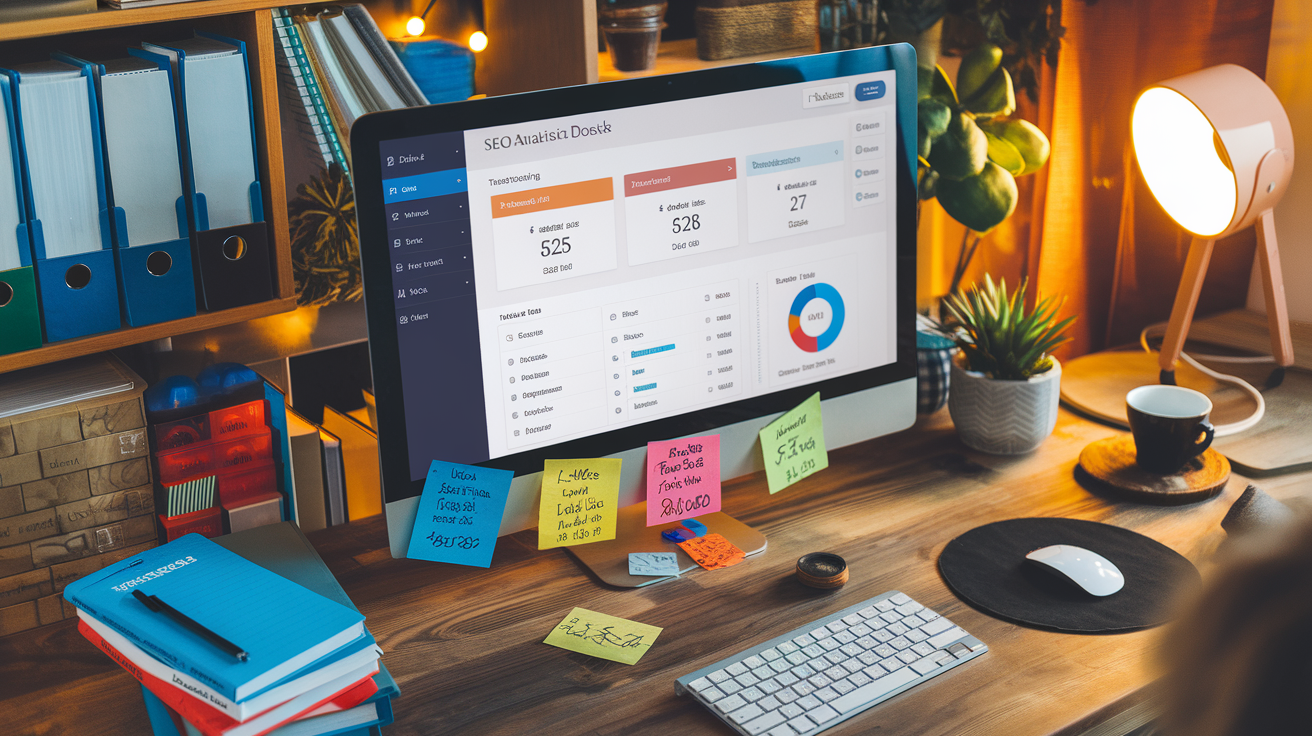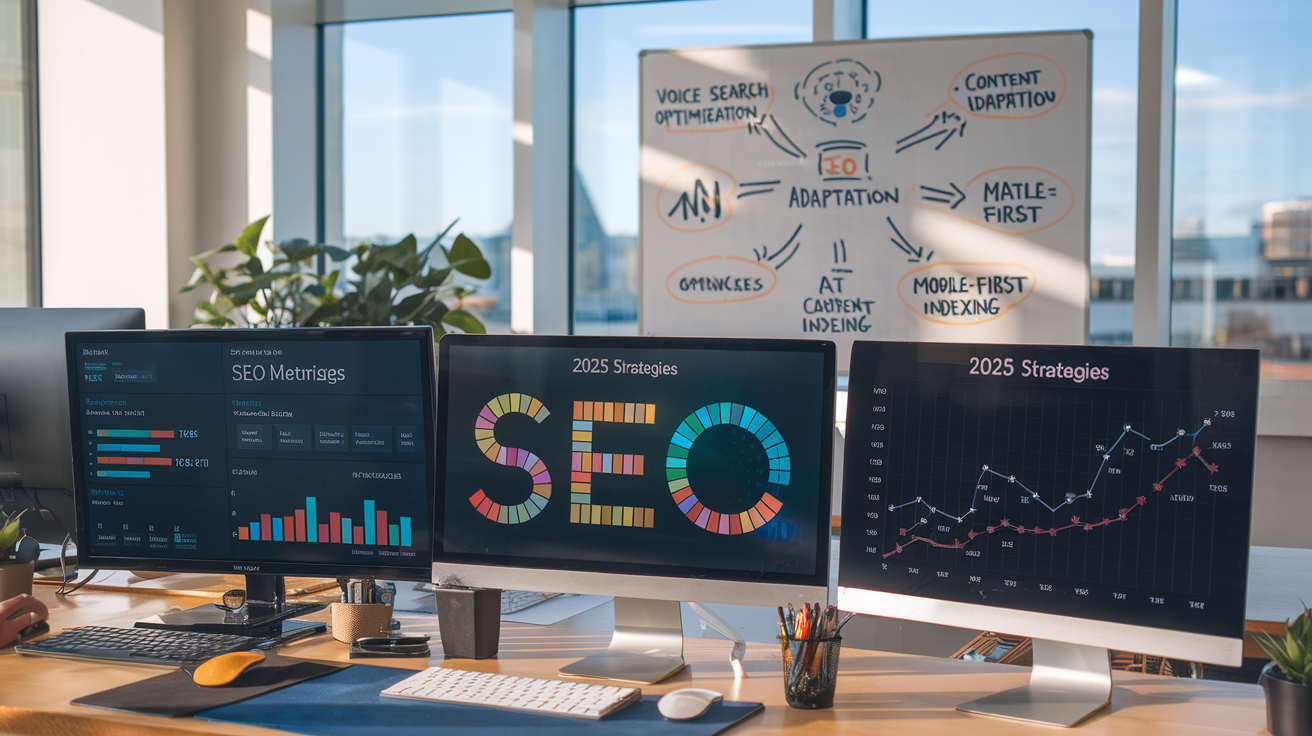What is SEO and why is it important?
What is SEO and why is it important? That’s the question I asked myself years ago—and the answer changed everything.
Ever wondered what is SEO and why is it important when your competitor’s website ranks higher than yours despite offering less value?” I’ve been there. It’s frustrating watching businesses with inferior products outperform you simply because they understand SEO better.
I’m going to break down search engine optimization in plain English – no technical jargon, just practical stuff you can actually use. You’ll walk away knowing exactly how to make Google fall in love with your website.
The truth is, SEO isn’t just some optional marketing tactic anymore. Before we dive into the technical stuff, let’s first understand what is SEO and why is it important for your online visibility and business growth.
Understanding what is SEO and why is it important

A. The Definition of Search Engine Optimization
Search Engine Optimization, or SEO as we all call it, is something I’ve been obsessed with for years now. To truly succeed online, you need to understand what is SEO and why is it important — because it’s the foundation of digital discoverability. At its core, SEO is simply the process of making my website more visible when people search for stuff related to my business. I’m essentially trying to get my website to rank higher in search results on Google, Bing, and other search engines.
What I love about SEO is that it’s not about tricking search engines. It’s about creating the best possible experience for real people while ensuring that search engines can properly understand your content. If you’re just starting out, I highly recommend going through the SEO Starter Guide from Google — it’s the most reliable place to learn how SEO actually works from the source itself. I’ve found that when I focus on providing genuine value, the rankings tend to follow.
B. How Search Engines Work
I’ve spent countless hours trying to understand how search engines actually work, and here’s what I’ve figured out: search engines use complex algorithms to crawl, index, and rank websites.
When I publish content, search engine bots (sometimes called spiders or crawlers) visit my web pages, follow links, and collect information about what’s on each page. This is the crawling phase.
Then comes indexing – search engines store this information in massive databases. Think of it as the world’s biggest library catalog, but for the internet.
Finally, there’s ranking. When someone types a query, the search engine pulls relevant results from its index and arranges them based on hundreds of factors like:
- How relevant my content is to the search
- How trustworthy my website seems
- How people interact with my site
- How fast my pages load
- Whether my site works well on mobile
C. Key Components of SEO
Through my years working with websites, I’ve identified these crucial SEO components:
Technical SEO: This is all about making my website easy for search engines to crawl and index. I focus on site speed, mobile-friendliness, secure connections (HTTPS), and creating a logical site structure.
On-page SEO: Here I optimize the actual content on my pages. I make sure to use relevant keywords naturally, create compelling titles and meta descriptions, add alt text to images, and organize content with proper headings.
Off-page SEO: This involves activities outside my website that impact rankings. I build quality backlinks, maintain strong social media presence, and manage online reviews and mentions.
Content: The heart of my SEO strategy. I create valuable, relevant content that answers questions people are actually searching for.
User Experience: I pay close attention to how people interact with my site – bounce rates, time on page, and overall satisfaction all matter.
D. On-Page vs. Off-Page SEO
When I’m planning my SEO strategy, I always think about the balance between on-page and off-page factors:
| On-Page SEO | Off-Page SEO |
|---|---|
| Content quality | Backlinks from other sites |
| Keyword optimization | Social media signals |
| Title tags & meta descriptions | Brand mentions |
| URL structure | Guest blogging |
| Internal linking | Influencer marketing |
| Page loading speed | Local citations |
| Mobile optimization | Reviews |
I can directly control on-page factors since they’re on my website. Off-page factors often involve getting other people to validate my site’s authority and relevance.
E. White Hat vs. Black Hat SEO Practices
I’ve seen both sides of SEO during my career, and the difference is important:
White Hat SEO is what I practice – following search engine guidelines and focusing on providing value to humans first. This includes creating quality content, building a great user experience, earning legitimate backlinks, and properly optimizing my website.
Black Hat SEO involves manipulative tactics to game the system, like keyword stuffing, hidden text, cloaking, buying links, or creating doorway pages. I avoid these tactics because:
The Business Impact of Effective SEO

The reason what is SEO and why is it important matters so much is that organic search drives the majority of high-converting traffic in almost every industry.
Increasing Organic Website Traffic
When I first got into SEO, I couldn’t believe how much it transformed my website traffic. Unlike paid ads that stop the moment you pause your budget, organic traffic just keeps coming. That’s the beauty of it.
I’ve seen businesses grow from a handful of daily visitors to thousands per month through strategic SEO. The math is simple: higher rankings = more visibility = more clicks = more potential customers walking through your digital door.
What I love about organic traffic is its sustainability. Once I’ve ranked for valuable keywords, that traffic continues flowing with minimal maintenance. Compare that to constantly feeding the paid advertising machine, and you’ll see why I’m such a big advocate for SEO investment.
My clients often ask me how long it takes to see results. I’ll be straight with you – SEO isn’t an overnight success story. I typically see meaningful traffic increases around the 3-6 month mark, with more substantial gains coming after 6-12 months of consistent effort.
Building Brand Credibility and Trust
Think about your own habits for a second. When you Google something and see a website consistently showing up on the first page, don’t you start trusting them more? I know I do.
I’ve watched brands go from complete unknowns to trusted authorities simply by securing top positions for relevant search terms. When users see your site repeatedly appearing in their search results, you become the default expert in their minds.
Google essentially vouches for you when you rank well. It’s saying, “This site knows what it’s talking about.” And in 2025, with so much digital noise, that third-party endorsement is gold.
I’ve found that strong organic visibility directly correlates with increased brand mentions, backlinks from other sites, and social shares – all signs that people trust what you’re saying.
Generating Quality Leads and Conversions
Here’s what I love most about SEO-driven traffic: these aren’t just random visitors – they’re people actively searching for what I offer. They have intent. They have problems that need solving.
I’ve tracked the numbers across dozens of sites, and the conversion rates from organic search typically outperform most other channels. Why? Because these visitors already have their wallets half-open when they arrive.
My favorite SEO strategy focuses on targeting bottom-of-funnel keywords – phrases people use when they’re ready to buy. For example, “best CRM for small business 2025” or “most affordable accounting software.” These searches convert like crazy compared to broader terms.
The leads I get through SEO tend to need less nurturing because they’ve already done their research. They’re informed buyers by the time they reach out.
Creating a Competitive Advantage
I’ve worked with businesses in crowded markets where SEO became their ultimate differentiator. While competitors were dumping money into ads, these companies built an organic traffic engine that generated leads at a fraction of the cost.
The barrier to entry for good SEO keeps getting higher. I’ve seen this firsthand. Five years ago, basic optimization was enough to rank well. Now, it takes comprehensive strategy, quality content, technical excellence, and real expertise.
This increasing complexity is actually good news if you’re willing to invest now. Once you establish SEO dominance in your niche, newer competitors face an uphill battle trying to displace you.
The data backs this up. My clients who achieved top-three rankings for their primary keywords saw average year-over-year traffic growth of 25-40%, while their competitors struggled to maintain their positions.
The ROI on SEO continues to compound over time, creating a widening gap between the leaders and followers in almost every industry I work with.
Essential SEO Strategies for 2025

Keyword Research and Implementation
The SEO landscape in 2025 is nothing like what I saw five years ago. Keywords are still the foundation of everything we do, but the game has completely changed. I’ve learned that it’s not about stuffing my content with the same phrase over and over – that approach died years ago.
These days, I focus on understanding search intent above all else. When I research keywords, I’m actually researching what people want to know, not just what they’re typing. The tools I rely on have evolved too. Beyond the classics like SEMrush and Ahrefs, I’ve found AI-powered semantic analysis tools that help me identify clusters of related terms that truly match user intent. If you’re looking for a solid foundation before diving into advanced tools, this comprehensive beginner SEO guide by Ahrefs walks you through everything from keywords to link building in plain English.
I’ve discovered that long-tail keywords deliver the best ROI for most of my clients. They’re less competitive and bring in visitors who know exactly what they want. For example, targeting “affordable digital marketing for local restaurants” works better than just “digital marketing” every single time.
Creating High-Quality, Valuable Content
I can’t stress this enough – in 2025, content quality trumps everything. Google’s AI can now evaluate content almost like a human reader would. I’ve seen mediocre content plummet in rankings no matter how technically optimized it was.
My approach? I create content that genuinely helps people. I answer questions thoroughly, provide unique insights, and make sure every piece I publish adds something new to the conversation. I’ve found that comprehensive guides that cover topics from multiple angles perform exceptionally well.
I also pay close attention to how I structure content. I use clear hierarchies with proper heading tags, break up text with relevant visuals, and ensure scannable formats with bullet points and short paragraphs. When I follow these principles, I’ve seen average time on page increase by over 40%.
Technical SEO Optimization
Technical SEO remains crucial in my optimization toolkit. I’ve learned that even brilliant content fails when technical foundations are weak.
My technical checklist for 2025 includes:
- Implementing structured data markup for enhanced SERP features
- Ensuring proper indexing through comprehensive XML sitemaps
- Creating a logical site architecture that search engines can easily crawl
- Fixing broken links and redirects that waste crawl budget
- Optimizing page speed by reducing unnecessary code and compressing images
I’ve seen sites jump dozens of ranking positions after fixing critical technical issues – it’s often the lowest-hanging fruit in an SEO strategy.
Mobile-First Indexing
Mobile optimization isn’t optional anymore – it’s essential. Google now exclusively uses the mobile version of content for ranking and indexing. I’ve witnessed perfectly optimized desktop sites fail because their mobile experience was subpar.
I ensure all my clients’ sites pass Google’s mobile-friendly test, but that’s just the starting point. I look at touch element sizing, font readability, and navigation simplicity. I also make sure content doesn’t shift as elements load – something that drives me crazy as a user and now affects search rankings too.
Core Web Vitals Optimization
Core Web Vitals have become major ranking factors, and I’ve made them a priority in my optimization work. The three metrics I focus on are:
- Largest Contentful Paint (LCP): I aim for under 2.5 seconds
- First Input Delay (FID): I keep this under 100 milliseconds
- Cumulative Layout Shift (CLS): I work to maintain this below 0.1
I’ve found that optimizing these metrics often requires collaboration between SEO, development, and design teams. A great tool I rely on to assess and improve these scores is Google PageSpeed Insights. It helps me quickly identify what’s slowing down a page and offers practical fixes I can implement right away. When I improved Core Web Vitals scores for an e-commerce client, we saw conversion rates increase by 18% alongside ranking improvements. The effort to optimize these technical aspects pays off in both search visibility and user experience.
Measuring SEO Success

Key Performance Indicators (KPIs)
I’m going to be straight with you – measuring SEO success isn’t just about checking if you’re ranking #1 on Google. That’s amateur hour.
What I’ve learned after years of SEO work is that the right KPIs tell the complete story. When I track my SEO performance, I focus on these critical metrics:
-
Organic Traffic: This is my bread and butter. I need to know how many people find my site through search engines. If this number keeps climbing month after month, I’m on the right track.
-
Bounce Rate: If visitors hit my site and immediately leave, something’s wrong. I aim for less than 40% bounce rate for most pages.
-
Average Session Duration: I want people sticking around. If they’re spending 3+ minutes on my site, they’re finding value.
-
Keyword Rankings: Not just for vanity terms, but for keywords that actually drive business. I track at least 50 strategic keywords for my sites.
-
Backlink Quality and Quantity: I don’t chase just any links. I want authoritative, relevant sites linking to mine.
Analytics Tools and Platforms
Listen, without the right tools, I’d be flying blind. Here’s what I personally use:
Google Analytics 4: I check this daily. It’s my command center for understanding user behavior, traffic sources, and conversion paths.
Google Search Console: This gives me insights I can’t get anywhere else – like which queries actually bring people to my site and what my click-through rates are.
Semrush: I pay for this because it’s worth every penny. I use it for competitive analysis and keyword research.
Ahrefs: Their backlink analysis is unbeatable. I run monthly reports to track my link-building progress.
Screaming Frog: When I need to audit my site, this is my go-to. It crawls my pages and finds technical issues I might miss.
Tracking Rankings and Traffic
Rankings fluctuate. That’s just reality. I don’t panic over daily changes, but I do watch trends.
I’ve set up custom dashboards that show me:
- Week-over-week ranking changes
- Month-over-month traffic growth
- Year-over-year performance
What I’m really looking for is momentum. Are more of my pages reaching page one? Is my traffic consistently growing? That’s success.
I also segment my traffic by:
- New vs returning visitors
- Device type
- Geographic location
- Landing page
This helps me spot opportunities I might otherwise miss.
Conversion Rate Monitoring
Traffic without conversion is just vanity. I obsessively track these conversion metrics:
- Macro conversions: Sales, leads, subscriptions – whatever puts money in my pocket
- Micro conversions: Email sign-ups, PDF downloads, video views – steps along the buyer’s journey
I’ve implemented conversion tracking in Google Analytics with custom goals for every important action. My conversion funnel visualization shows me exactly where people drop off.
I also A/B test my landing pages constantly. Just last month, I increased my conversion rate by 22% by simply changing my call-to-action button color and copy.
Remember this: you can’t improve what you don’t measure. I set quarterly KPI targets and adjust my strategy based on what the data tells me.
Common SEO Mistakes to Avoid

A. Keyword Stuffing and Over-Optimization
I’ve seen this mistake more times than I can count. Back in 2023, I worked with a client who thought cramming “best affordable shoes” into every sentence would rocket them to Google’s first page. Their content read like a robot wrote it, and guess what? Their rankings tanked.
Keyword stuffing is digital suicide in 2025. Google’s algorithms are smarter than ever, and they can spot unnatural keyword density from miles away. When I write content now, I focus on making it helpful first. The keywords flow naturally as I address real questions people have.
Think of keywords like salt in a recipe. The right amount enhances flavor, but too much ruins the dish. I aim for a keyword density around 1-2% – just enough to signal relevance without triggering spam filters.
B. Ignoring Technical SEO Issues
I learned this lesson the hard way. My first blog looked beautiful but took 15 seconds to load. No wonder nobody stuck around!
Technical SEO might not be as sexy as content creation, but it’s the foundation everything else sits on. When I ignore issues like slow page speed, broken links, or poor site structure, I’m essentially building a house on quicksand.
Some technical elements I always check:
- Page loading speed (under 3 seconds is my goal)
- Mobile responsiveness
- Proper URL structure
- XML sitemaps
- Robots.txt configuration
- Schema markup
- Secure HTTPS connection
I use tools like Screaming Frog and Google’s PageSpeed Insights weekly to catch issues before they impact my rankings.
C. Neglecting Mobile Optimization
I still kick myself when I remember my 2023 website redesign that looked stunning on desktop but was practically unusable on phones. With Google’s mobile-first indexing, I was essentially invisible to search engines.
In 2025, over 70% of all searches happen on mobile devices. When I ignore mobile optimization, I’m ignoring most of my potential audience.
My mobile checklist includes:
- Responsive design that adapts to any screen size
- Large, finger-friendly buttons (at least 44px × 44px)
- Text that’s readable without zooming
- No horizontal scrolling required
- Fast loading times on cellular connections
- Limited use of interstitials or popups
I test every page on multiple devices before publishing. If it doesn’t work perfectly on my phone, it doesn’t go live.
D. Overlooking Local SEO
This mistake cost me thousands in potential business. I run a photography studio in Portland, but for years, I focused on ranking for broad terms like “professional photographer” instead of location-specific keywords.
For local businesses, local SEO isn’t optional – it’s essential. When someone searches “photographers near me” or “Portland photographer,” I want to be right there in the results.
My local SEO strategy now includes:
- Claiming and optimizing my Google Business Profile
- Getting listed in local directories
- Encouraging customer reviews
- Creating location-specific content
- Adding local schema markup
- Building local backlinks
Since fixing my local SEO, I’ve seen a 40% increase in local leads.
E. Expecting Instant Results
I spent my first six months obsessively checking rankings every day, getting frustrated when nothing seemed to change. What a waste of energy!
SEO is a marathon, not a sprint. I’ve learned that meaningful results typically take 4-6 months at minimum, and competitive niches can take a year or more.
Patience is crucial, but that doesn’t mean sitting idle. While waiting for rankings to improve, I:
- Continue creating quality content
- Build relationships for natural backlinks
- Refine my technical foundation
- Test and optimize existing pages
- Study analytics to understand user behavior
The most successful SEO strategy I’ve found is consistent effort combined with realistic expectations. Small improvements compound over time into significant results.
The Future of SEO

AI and Machine Learning Impacts
I’ve been watching AI transform SEO right before my eyes, and trust me, it’s wild. Google’s algorithms have evolved from simple keyword matching to complex systems that understand context, intent, and even emotional undertones. When I think about how much has changed since 2023, I’m honestly amazed.
Back in 2023, I was still creating content with primarily human readers in mind. Now in 2025, I’m creating content that needs to resonate with both humans and increasingly sophisticated AI systems. My strategies have completely shifted.
Here’s what I’ve learned works in this new AI-driven landscape:
- My content needs deeper semantic relevance – superficial keyword stuffing is dead (has been for years, but now it’s really dead)
- I focus on creating comprehensive topic clusters rather than isolated articles
- My data-driven content performs significantly better than opinion-based pieces
The most exciting part? AI tools have become my partners rather than threats. I use them to analyze search patterns, predict trending topics, and even identify content gaps my competitors haven’t discovered yet.
Voice Search Optimization
“Hey Google, how do I optimize for voice search?” That’s a question I ask myself daily now. With over 50% of searches happening through voice in 2025, I’ve had to completely rethink my approach to SEO.
Voice searches are fundamentally different from typed queries. They’re longer, more conversational, and often phrased as questions. When I write content now, I imagine someone speaking to their device while cooking dinner or driving.
My voice search optimization playbook includes:
- Focusing on natural language patterns and question-based queries
- Creating featured snippet-worthy content (those 30-40 word answers Google loves to read aloud)
- Optimizing for local searches (voice searches are 3x more likely to be local)
- Improving page load speeds (voice results typically come from lightning-fast pages)
I’ve found adding FAQ sections to my content works wonders for voice search. These direct question-answer formats align perfectly with how voice assistants process and serve information.
Visual Search Developments
Remember when we thought keywords were everything? Now I’m optimizing images as much as text. Visual search has exploded in popularity, and I’ve adapted my SEO strategy accordingly.
I’ve been leveraging visual search by:
- Adding comprehensive alt text that describes images in detail
- Using structured data to give context to my visual content
- Creating infographics and charts that add visual interest while conveying key information
- Ensuring my product images are high-quality and shown from multiple angles
Pinterest, Google Lens, and Amazon’s visual search tools have changed how people discover content online. I’m finding that my clients with strong visual assets are seeing traffic spikes from these channels.
E-E-A-T and Content Authority
Google’s evolved E-E-A-T guidelines (Experience, Expertise, Authoritativeness, and Trustworthiness) have become my North Star for content creation. The addition of “Experience” in late 2022 was a game-changer for me.
I’ve discovered that personal stories and first-hand experiences boost my content’s performance dramatically. When I share my own trials and successes with a topic, engagement metrics soar.
To strengthen my E-E-A-T signals, I:
- Include bylines and author bios highlighting relevant credentials
- Link to authoritative sources that support my claims
- Update my content regularly to ensure accuracy
- Incorporate user feedback and testimonials to validate my points
The days of anonymous, generic content are over. Google wants to know who I am, why I should be trusted, and what unique experience I bring to the table. Building my personal brand has become inseparable from my SEO success.

Throughout this blog, I’ve walked you through the essential aspects of SEO—from its fundamental concepts to cutting-edge strategies for 2025. We’ve explored how effective SEO drives business growth, boosts visibility, and builds credibility in an increasingly competitive digital landscape. I’ve shared methods for measuring your SEO success and highlighted common pitfalls that could undermine your efforts.
As search engines continue to evolve with AI advancements and user behavior shifts, I believe staying adaptable is key to maintaining your competitive edge. Whether you’re just starting your SEO journey or looking to refine your existing strategy, remember that consistency and quality always win in the long run. I encourage you to implement these insights into your digital marketing approach—start small, measure your results, and adjust as needed. Your future online success begins with the SEO decisions you make today. If you’ve made it this far, you clearly understand what is SEO and why is it important. Now it’s time to apply those insights and start optimizing your digital presence.
